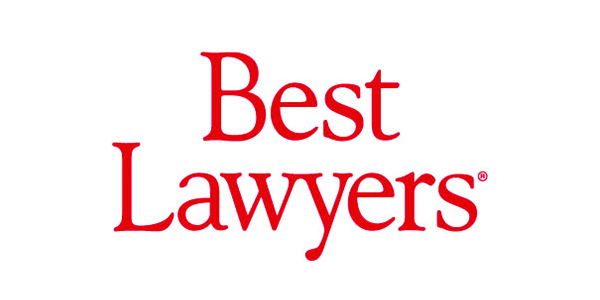Inflation and rising costs are at the forefront of everyone’s mind as we enter 2023. The current volatile market makes it more important than ever to understand the rent escalation clauses in current and future commercial lease agreements.
Ashley Wagner awagner@tuckerlaw.com, (412) 594-5550
A Bit of Background
Some commercial leases provide for fixed, consistent annual increases in rent, whereas others provide for rent to increase at intervals relative to certain economic metrics like the consumer price index (“CPI”). This distinction is particularly important when considering commercial tenant renewal options. When inflation is high or experiencing rising levels, as we saw throughout 2022 and as we move into 2023, rent increases that are dependent upon economic metrics to calculate the increased amount of rent may result in unexpectedly (and often unwelcome) high rent amounts for a commercial tenant and may result in an unexpected (but welcomed) windfall for the commercial landlord. To those who follow the commercial real estate market, some of the consequences of unanticipated formulaic rent increases are already apparent, however focusing on these issues now may help to curtail landlord-tenant disputes and, hopefully, minimize non-payment of rent for commercial landlords and business risk for commercial tenants.
Negotiating a Lease with an Eye Toward Rent Increases
Every commercial landlord should be negotiating its commercial leases while keeping in mind two primary concerns:
- safeguarding its property interests and
- sustaining its profitability
For commercial tenants, managing and minimizing risk and protecting against unforeseen expenses are crucial when negotiating a commercial lease agreement.
It is important that landlords and tenants alike are clear on the rent terms, and particularly the rental increases, in their commercial leases. Commercial leases often provide for annual rent increases at a fixed rate (often 2-3%). Sometimes, these increases are not annual but rather bi-annual or every few years, or occasionally there are no increases in the initial term of a lease, with increases during any renewal term. Some commercial leases provide for increases that are not fixed but rather are tied to CPI or other economic metrics, and still others use a combination of methods to provide for escalation of various rental amounts.
For better or for worse, depending on which party you are in the commercial lease, inflation and rent escalation clauses that rely on economic metrics are directly related—as inflation rises, rent rises in direct correlation with it. While inflation has ebbed and flowed throughout history, recent and fast-rising inflation is creating unanticipated results for all involved.
Top Three Rent Escalation Structures
- Fixed Increases – these allow landlords to increase base rent by a set amount or set percentage on a previously agreed-upon timeline throughout the duration of the term. This is the most common type of increase for base rent, and it is arguably the most straightforward method. However, fixed increases do not account for changing market conditions, which is a complaint often heard from commercial landlords. In times of high inflation, a landlord may end up losing its desired profit margin if costs have gone up and the fixed increases no longer cover those rising costs. Fixed increases are sometimes referred to as stepped or percentage increases.
- Indexed or Variable Escalation – this option allows landlords to increase base rent in proportion to increases in established economic indexes, such as CPI. Although indexed escalation increases can be used annually during the initial term of a lease, it is common to use this method to establish rent for a renewal term, aligning rent for the renewal term with the economic environment. Although landlords may lean toward this option during times of high inflation, it is less favored by tenants because index increases can be unpredictable and dramatic. Consider that in January 2021, CPI for all consumers was up 1.4% from the prior 12 months, whereas by January 2022, it was up 7.5%. In addition, while index increases may align with national economic trends, they may not represent local real estate trends—which may be trending higher (Bozeman, Montana, anyone?) or lower, depending on the area.
- Pass-Through Escalation – this type of increase is a form of rent escalation that is initiated only when the landlord experiences an increase in specified costs as dictated by the lease agreement. This is most common in leases where a commercial tenant is responsible for reimbursing a landlord for building operating expenses and/or common area maintenance.
Often a commercial lease will provide for fixed or indexed escalation increases in base rent as well as pass-through escalation for additional rent amounts.
Implementing Rent Escalators and The Takeaway
When it comes to rent escalators tied to indexes, it is critical to understand how the current economic environment will impact future rent. A common issue is whether an existing commercial tenant should exercise a renewal option it may have in its lease. Often, tenant renewal options provide for rent to be calculated using market metrics. Ostensibly, this works in the tenant’s favor when the economic environment is stable and inflation is low. In such cases, the formulaic rent escalations adjust the rent to where the market suggests it should be and typically yield a result both parties will accept. However, in volatile market conditions with high inflation, the formulaic rent escalations could adjust the rent to extreme amounts not expected by either party. For tenants, this could create an increase in rental amounts beyond what may have been budgeted or what is sustainable by the tenant’s business. For landlords, this could create scenarios where tenants are unable to afford the drastically increased rent, leading to a higher rate of default or non-renewal and, potentially, unwanted vacant space.
Commercial landlords and tenants often have similar goals in that tenants desire to pay a fair market rent and landlords wish to ensure steady rent payments (reasonable rent=regular payments). If, for example, a commercial tenant is coming up for renewal in a lease relying on CPI, the first step would be to communicate concerns to the landlord. Most landlords would often welcome reasonable dialogue, prior to any default or notice of non-renewal, to discuss present economic conditions. Since a commercial lease has many components, there are many intangibles that can be negotiated for a renewal term to soften the blow of drastically escalating indexed rent. These could include improvements to the space, storage or expansion space, longer term and others.
If a commercial lease is at its initial negotiation stage, then instead of inserting standard provisions that use straightforward economic metrics to determine future rent (which many tenants would hesitate to agree to in this climate), landlords and tenants can provide for limits, or caps, on market index related increases. Another option is to identify and use localized real estate market metrics as the basis for increasing future rent instead of using national indexes so that any resulting increase is better aligned with the regional market instead of national economic trends.
Whatever the solution, we all must buckle in to get through this era of inflation with our commercial leases still intact.
Reprinted with permission from the 2023 Best Lawyers®: Real Estate and Infrastructure issue. Further duplication without permission is prohibited. All rights reserved. Click here to see the article as it appeared in the print publication.


